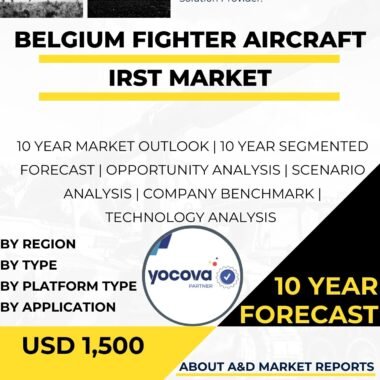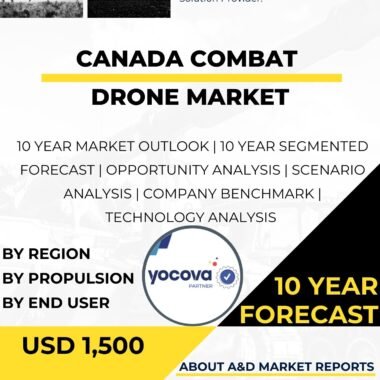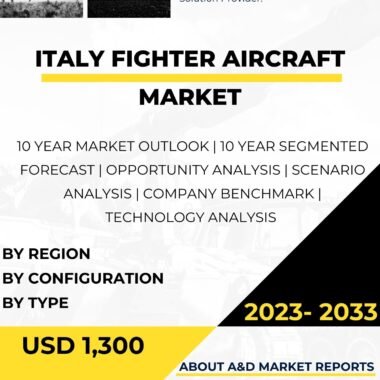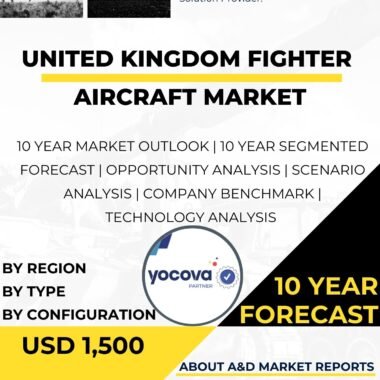Description
Malaysia Fighter Aircraft market plays a central role in the nation’s defense strategy and reflects its commitment to maintaining a strong and capable air force. As a strategically positioned country in Southeast Asia, Malaysia faces diverse security challenges such as territorial disputes and regional tensions. Strengthening its fighter aircraft fleet is essential for ensuring air defense readiness and contributing to long-term regional stability.
Malaysia Fighter Aircraft Market Strategic Importance
Integrating fighter aircraft into Malaysia’s armed forces offers key operational advantages. Modern fighter jets come equipped with advanced avionics, sensors, targeting systems, and high-precision weapons. These capabilities give Malaysia air superiority and the ability to secure its airspace. Fighter aircraft support essential missions such as aerial patrols, surveillance, quick-reaction alerts, and combat operations, allowing the military to respond rapidly and effectively to potential threats.
The presence of a capable fighter fleet also strengthens Malaysia’s deterrence posture. A modern air force signals readiness and commitment, reducing the likelihood of hostile actions and reinforcing Malaysia’s role as a responsible security actor in the region.
Malaysia Fighter Aircraft Market International Collaboration
Malaysia’s government has long emphasized the importance of working with global defense partners to expand its fighter aircraft capabilities. Collaborations with leading international manufacturers provide access to advanced technologies, sustainment expertise, and long-term support solutions. These partnerships often include knowledge sharing and technology transfer, enhancing Malaysia’s domestic aerospace and defense ecosystem.
To ensure operational flexibility, Malaysia has diversified its procurement sources. Fighter jets from the United States, Russia, and Europe give the air force a balanced fleet and access to multiple technological advantages. This diverse approach also reduces overreliance on any single supplier and increases strategic resilience.
Malaysia Fighter Aircraft Market Fleet Modernization
Malaysia continues to invest in modernization programs to upgrade its existing aircraft. By enhancing avionics, weapons systems, and electronic warfare capabilities, the country extends the life of its current fleet while improving overall performance. These upgrades help maintain cost efficiency and ensure aircraft remain effective against evolving threats.
Modernization also supports Malaysia’s broader goal of improving readiness and preserving operational continuity until future procurement decisions are finalized.
Malaysia Fighter Aircraft Market Challenges
Despite progress, the Fighter Aircraft market faces several challenges. Acquiring and sustaining advanced fighter aircraft requires substantial financial investment. Beyond procurement, significant costs arise from pilot training, weapon systems integration, maintenance infrastructure, and long-term operational support. Budget constraints may affect procurement timelines and limit the scale of modernization programs.
The changing regional security environment adds further complexity. As threat profiles evolve, Malaysia must continually reassess its air force requirements, ensuring that fighter aircraft capabilities remain aligned with new operational demands.
Malaysia Fighter Aircraft Market Emerging Technologies
The rise of fifth-generation fighter aircraft introduces new opportunities and considerations for Malaysia. These next-generation platforms feature stealth characteristics, advanced sensor fusion, and network-centric capabilities that markedly improve survivability and combat performance. As global adoption increases and production costs stabilize, Malaysia will face strategic decisions regarding whether and how to integrate fifth-generation fighters into its future fleet.
At the same time, advancements in Unmanned Aerial Vehicles and autonomous systems are reshaping modern air combat. Malaysia, like many nations, must evaluate how UAVs can complement manned fighter aircraft, enhance surveillance missions, and provide additional strike or support capabilities.
Malaysia Fighter Aircraft Market Outlook
The long-term outlook for Malaysia’s Fighter Aircraft market remains positive. The government continues to prioritize investments in its air force to maintain national security and contribute to regional defense cooperation. Technological advancements and the global availability of increasingly capable fighter platforms will continue to drive modernization initiatives.
Malaysia’s involvement in regional security partnerships, joint exercises, and multinational defense frameworks will further shape its future fighter aircraft requirements. Interoperability with partner nations and enhanced integration with shared defense systems will become increasingly important for maintaining strategic relevance.
Conclusion
The Fighter Aircraft market in Malaysia forms a vital pillar of the country’s defense posture. Through modernization efforts, international collaborations, and a diversified procurement strategy, Malaysia has steadily strengthened its fighter aircraft capabilities. These efforts enable the air force to protect national airspace, maintain regional stability, and respond to emerging threats.
However, future progress depends on managing budget limitations, adapting to rapidly evolving technologies, and addressing new security challenges. By maintaining a versatile, well-equipped fighter aircraft fleet, Malaysia can continue to secure its air domain and uphold its strategic role in Southeast Asia.




